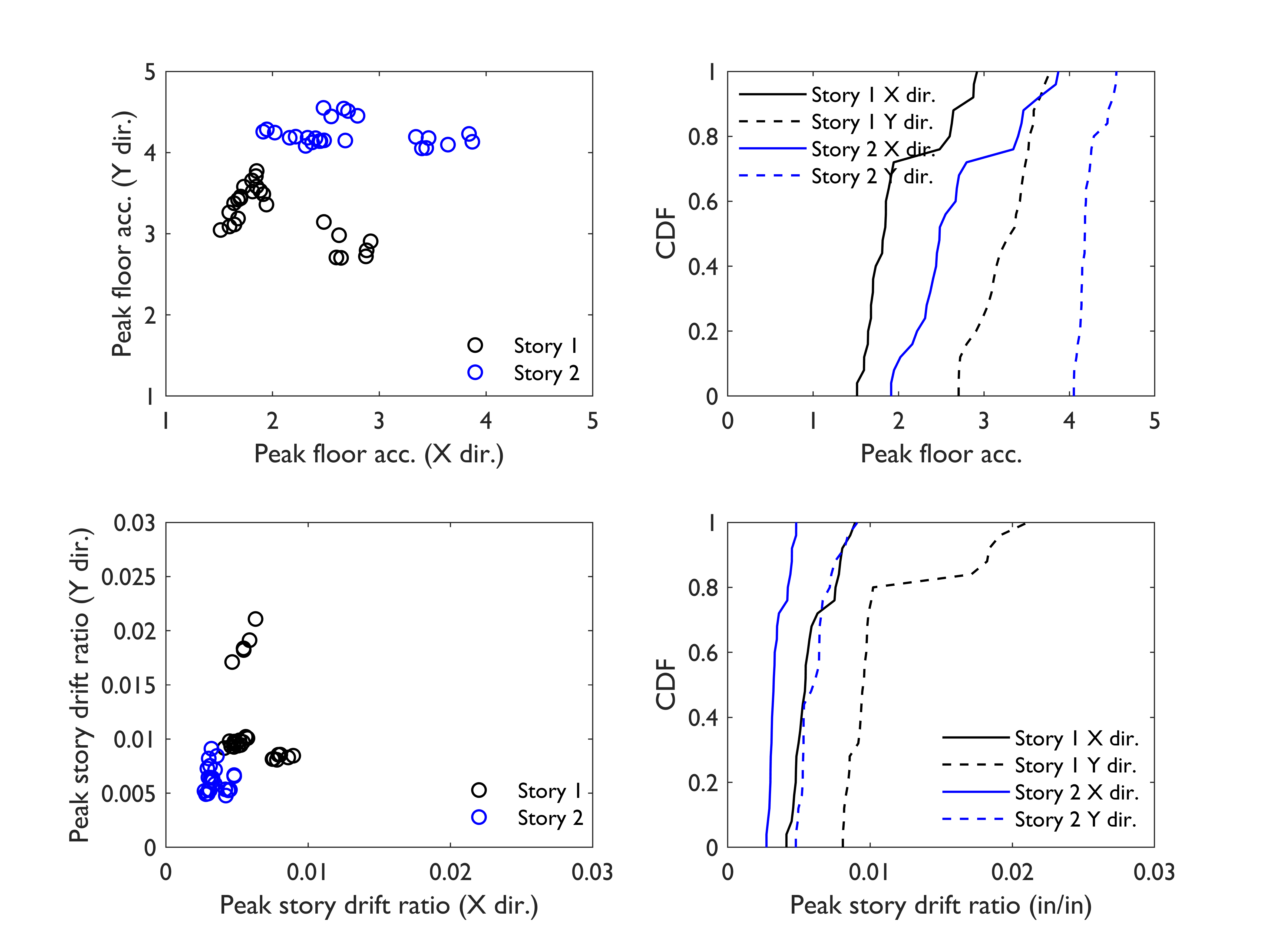1.4. Response Simulation
The non-linear response of buildings to ground shaking is simulated using OpenSees ([OpenSees20]) and an application, MDOF-LU, that generates an idealized structural analysis model based on structure type, height, plan area, year of construction, and the type of occupancy. The MDOF-LU application is based on a method developed by [Lu14] that uses the building configurations in the HAZUS earthquake technical manual and corresponding capacity curve descriptions to define a multi-story non-linear shear-column finite element model with lumped masses.
Each of the 1.84 M building models is analyzed for 25 pairs of 2D ground motions, where the peak story drift ratios and peak floor accelerations are recorded for subsequent damage and loss analyses. Fig. 1.4.1 shows one example pair of 2D ground motion acceleration histories. It is used for analyzing a 2-story wood frame multi-unit residential building in Berkeley (initially built in 1972 and tagged as a Moderate-Code design). Fig. 1.4.2 shows the resulting story drift ratio and peak floor acceleration demands under the example ground motion pair. The vibration in the Y direction (North-South) is more intense (peak story drift ratio is around 1.9% in the first story, and peak floor acceleration is around 4 g in the second story).

Fig. 1.4.1 Example ground motion acceleration histories of simulated SW4 seismograms.

Fig. 1.4.2 Structural responses of the wood frame under the example ground motion pair.
The approximations and uncertainties in the structural model and behavior are considered by treating the initial stiffness and the damping ratio as random variables with a 0.1 coefficient of variation. These uncertainties are propagated through the analysis using different realizations of the stiffness and damping parameters for each of the 25 non-linear dynamic analyses for each building. Fig. 1.4.2 shows the distributions of the simulated structural responses of the example wood frame.

Fig. 1.4.3 Simulated structural response distribution of the wood frame with modeling uncertainty under the 25 ground motion pairs.
OpenSees (2020). Open System for Earthquake Engineering Simulation. Berkeley: OpenSees.
Lu, X., Han, B., Hori, M., Xiong, C., and Xu, Z. (2014). A coarse-grained parallel approach for seismic damage simulations of urban areas based on refined models and GPU/CPU cooperative computing. Adv. Engine. Soft. 70, 90–103. doi: 10.1016/j.advengsoft.2014.01.010